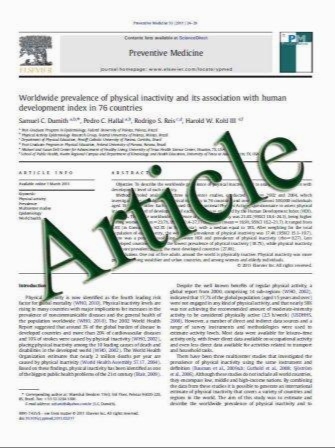Tumor–stroma ratio in the primary tumor is a prognostic factor in early breast cancer patients, especially in triple-negative carcinoma patients
- نوع فایل : کتاب
- زبان : انگلیسی
- مؤلف : Esther M. de Kruijf Johanna G. H. van Nes Cornelis J. H. van de Velde Hein Putter Vincent T. H. B. M. Smit Gerrit Jan Liefers Peter J. K.
- چاپ و سال / کشور: 2010
Description
Stroma tissue surrounding cancer cells plays an important role in tumor development and behavior. In colorectal cancer, it has been found that the amount of stroma within the primary tumor is of prognostic value. We therefore have evaluated the prognostic value of this tumor– stroma ratio for breast cancer. A cohort of 574 early breast cancer patients, primarily treated with surgery between 1985 and 1994 was analyzed for the tumor–stroma ratio. The percentage of stroma was visually estimated on Haematoxylin- Eosin (H&E) stained histological sections. Patients with more than 50% intra-tumor stroma were quantified as stroma rich and patients with less than 50% as stroma poor. For the total group of patients, stroma-rich tumors had a shorter relapse-free period (RFP) (P = 0.001) and overall survival (OS) (P = 0.025) compared to stroma-poor tumors. Tumor– stroma ratio was an independent prognostic parameter for the total group of patients (P\0.001) and also in stratified analysis based on systemic treatment. Importantly, in the triple-negative cancer subpopulation, patients with stromarich tumors had a 2.92 times higher risk of relapse (P = 0.006) compared to those with stroma-poor tumors, independently of other clinico-pathological parameters. Five-year RFP-rates for triple-negative cancer patients with stroma-rich compared to stroma-poor tumors were 56 and 81%, respectively. Tumor–stroma ratio has proven to be an independent prognostic factor for RFP in breast cancer patients and especially in the triple-negative cancer subpopulation. Tumor–stroma ratio could be easily implemented in routine daily pathology diagnostics, as it is simple to determine, reproducible, and performed in quick time.
Breast Cancer Res Treat (2011) 125:687–696 Received: 6 October 2009 / Accepted: 16 March 2010 / Published online: 2 April 2010 Springer Science+Business Media, LLC. 2010


